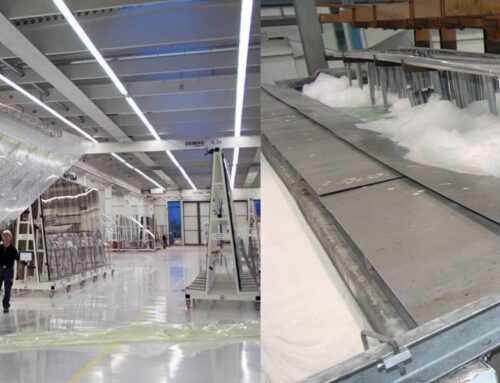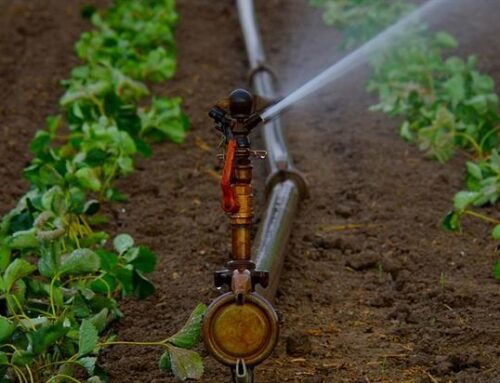Electrolysis of Water - Producing Hydrogen as an Energy Source
Electrolysis of Water – Producing Hydrogen as an Energy Source
Hydrogen is a clean and sustainable energy source that utilises water treated with reverse osmosis technologies as the feedwater for hydrogen production. There are two main ways of producing hydrogen: steam methane-reforming and the electrolysis of water.
Hydrogen has the potential to play a hugely significant role in the transition to a low-carbon economy to meet NetZero targets. One of the key advantages of hydrogen is that it produces no greenhouse gas emissions when used as a fuel. Hydrogen is likely to be one of the most important tools in the fight against climate change. When burned as a fuel, hydrogen does not produce any greenhouse gases. The only by-product Is water molecules.
There are three key types of hydrogen to remember. There are other colour categories relating to hydrogen production but we have chosen to focus on the following three key production methods:
Green Hydrogen
Green hydrogen is produced using renewable energy sources such as wind, solar or hydro power, through a process called the electrolysis of water. The electrolysis of water involves splitting reverse osmosis treated water (Ultra-Pure water) into hydrogen and oxygen molecules. Ultra-pure water is critical to this process. The oxygen molecules are vented out and the hydrogen is stored. The process of electrolysis uses an electric current to achieve this separation.
Untreated water can cause irreversible damage to the expensive electrolyser equipment. Since renewable energy is used to power this process, it is considered a clean and sustainable method of hydrogen production.
However, green hydrogen production is limited by infrastructure and operational costs at present. The current technology available comes at a premium. Technological advancements are required to improve the efficiency of electrolyser, turbine and hydrogen storage technologies to reduce costs and make green hydrogen the most viable solution.
Alternative production methods for hydrogen are being used to meet the demand for hydrogen as a fuel. The infrastructure for distribution and transportation is becoming critical for the adoption of green hydrogen production. Government funding and increased engagement and education around the subject matter are also required.
Grey Hydrogen
Grey hydrogen is produced using fossil fuels, it releases high emissions in the production process. Natural gas or methane are used to create hydrogen through steam reformation.
Blue Hydrogen
Blue hydrogen is also produced using fossil fuels but utilises carbon capture and storage, resulting in lower emissions than Grey hydrogen.
Evaporatively-cooled coal power plants are becoming obsolete. The large amount of water that they consume is going to reallocated. It is important that this newly redundant technology is going to free up the water supply.
There are numerous challenges associated with the widespread adoption of hydrogen as an energy source.
One of the key challenges is the cost of production and distribution, particularly in the early stages of development. However, as technology improves and economies of scale are achieved, the cost of hydrogen production is expected to decrease.
This will occur once demands increase and infrastructure begins to change to accommodate for hydrogen as a fuel source.
Hydrogen is a versatile energy carrier that can be used in a wide range of applications, including transportation, power generation, and industrial processes. It can be used directly as a fuel in fuel cells, or it can be converted into other fuels such as methane or ammonia. Its application in industrial use and transportation are rapidly gaining traction. The deployment of CO2 policies and hydrogen incentives mean that this demand is only set to further increase. Government initiatives and European Union projects have invited the collaboration between countries to undertake important pilot schemes that incorporate the electrolysis of water using offshore wind turbines.
Electrolytic hydrogen production is the new technology in renewable energy-rich areas, which are currently considered water-constrained. Using green hydrogen as a renewable energy source is likely to lead to water savings in the long term. It is integral that improvements are made in the energy efficiency of electrolysers for this to occur and the surrounding developing technologies.
Reverse Osmosis in Hydrogen Production – Water Electrolysis
The cost and complexity of producing demineralised water is heavily dependent on the source water quality. Water is an essential in hydrogen production projects. Water infrastructure can make up to 12.5% of a hydrogen projects’ overall installation cost. Large-scale wastewater reuse is often used to support water demand. It is also worth noting that water consumed in electrolysis can be recovered if hydrogen is used in processes that permit steam recovery.
Reverse osmosis (RO) is a widely used process for wastewater treatment, the purification of various liquids and in the desalination process of seawater. In recent years, it has also found applications in the production of hydrogen. One of the most common methods of hydrogen production is by water electrolysis.
The process of reverse osmosis for hydrogen production typically involves the following steps:
Water purification. The first step involves the purification of water to remove impurities that could potentially damage the membrane used in the reverse osmosis process. This is typically achieved through pre-treatment processes such as sedimentation, filtration, and ultrafiltration.
Once the water has been purified, it is passed through the selective membrane at high pressure. The hydrogen ions are then transported through the membrane, leaving behind other ions and impurities.
The hydrogen ions that pass through the membrane are then collected and stored. This can be achieved using an electrode or by passing the hydrogen through a gas separator.

Advantages of Reverse Osmosis in Hydrogen Production
Water electrolysis requires the use of electricity to split water molecules into hydrogen and oxygen. Reverse osmosis, on the other hand, only requires the use of pressure to separate hydrogen ions from water molecules. This makes it a more energy-efficient process.
Another advantage of reverse osmosis for hydrogen production is that it can be used with a wide range of water sources. This includes mains water, seawater, brackish water, and wastewater. Water electrolysis typically requires high-purity water to prevent damage to the electrolysis cell.
Reverse osmosis also offers greater flexibility in terms of scale. It can be used for both large-scale and small-scale hydrogen production, making it suitable for a wide range of applications. This is particularly important for decentralized energy systems, where smaller-scale hydrogen production is required.
Despite these advantages, there are also some challenges associated with the use of reverse osmosis for hydrogen production. One of the key challenges is membrane fouling, which occurs when impurities accumulate on the surface of the membrane, reducing its efficiency. This can be addressed by incorporating a suitable pre-treatment process and introducing regular maintenance schedules Changing consumables (filtration media and membranes) frequently also helps to optimise the performance of the system.
Conclusion
In conclusion, reverse osmosis is integral to hydrogen production that offers several advantages over traditional methods. It is an energy-efficient process that can be used with a wide range of water sources and is suitable for both large-scale and small-scale applications. While there are challenges associated with the use of reverse osmosis for hydrogen production, these can be addressed using appropriate pre-treatment processes and regular maintenance. As the demand for clean and sustainable energy sources continues to grow, reverse osmosis is likely to play an increasingly important role in hydrogen production.
Electricity and water are necessary elements for hydrogen production through the electrolysis of water.
The input water to an electrolyser stack must first be cleaned and deionised. The reverse osmosis purification process is commonly used prior to deionisation to ensure the electrolyser receives water of a sufficiently low electrical conductivity.
One alternative solution is to use reverse osmosis for seawater desalination. The electricity cost for desalinating water is believed to have little influence on the total hydrogen production cost. Efforts on how to easily integrate seawater into water electrolysis processes are required for future considerations.
Find Out More
We manufacture and stock a wide range of units to meet the hydrogen sector and its exacting water quality and flow rate requirements. We pride ourselves on our bespoke configurations that are tailored to meet the requirements of each of the industries that we work with.
Puretech Water Systems (UK) Ltd are a leading water treatment plant manufacturer. We are leading Commercial Water Softener Plant manufacturers and Commercial Reverse Osmosis Plant manufacturers.
We provide a 1st class installation and maintenance services on our own equipment as well as other manufacturers equipment. Our industry expertise and customer focused approach provide you with the best customer support possible and the service your company deserves.
Contact us to find out which Commercial Reverse Osmosis Unit best suits your application.
Call us to consult with an expert today! For a competitive quotation, call us on 01622 871 877.




